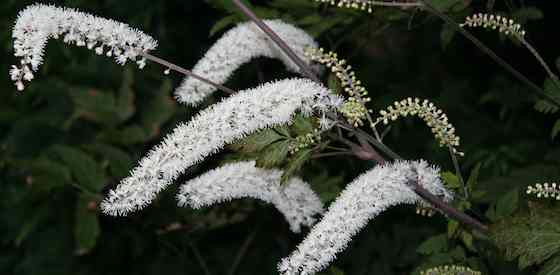By Sean Conway

There was a time in my early gardening career when the fall season made me melancholy. I hated to see the growing season end, and I still do to some degree. These days, however, I admit that a break from pulling weeds isn't such a bad thing.
Over the years, I have learned to include a few plants in my garden that provide something to look at as the rest of the garden fades from sight until spring.
Thankfully, there are some good garden plants that don't begin blooming until the shorter days of autumn arrive.
One of my favorites is Aster tataricus.
Tatarian aster, as it is also known, is one of the more impressive fall-blooming asters. Hardy to zone 3, it grows anywhere from 3 to 6 feet tall, depending on soil conditions, and is sturdy enough that it does not need staking.
Flowering longer than other garden asters, its 1-inch wide pale lavender flowers have golden centers and are an important food source for a variety of insects.
Tatarian aster begins blooming in my garden in late September or early October and often stays in bloom into November. Provide this late bloomer with full sun and well-drained soil, and you will be rewarded with an abundance of late-season color.
Another late bloomer, Actaea simplex 'Hillside Black Beauty,' not only perks up the fall garden, but also puts on a dramatic display of near-black lacy foliage from spring until fall.
This fantastic perennial is hardy well into zone 4 and doesn't start showing signs of flowering until days begin to get noticeably shorter in the fall. Growing to a height of 4 to 6 feet when happy, Hillside Black Beauty forms dramatic clumps that are spectacular all season long, but it looks it's best when in bloom.
It produces small creamy-white flowers on long wand-like stems. Looking like bottle brushes floating above near black foliage, a well-established clump is a sight to behold. But the attributes of this season extender don't stop there: The flowers have a delightful fruity scent that seems to linger in the late-season air, especially in the evening.
Actea prefers to grow in well-drained soil that is rich in organic content. Plant it in partial shade and out of the hot sun. The largest clump I have is on the north side of an evergreen planting where it has a few hours of morning sun and a few hours of late afternoon sun.
To get the most bang for your buck when choosing garden plants, look for those that provide more than just one season of interest. Like Actea x 'Hillside Black Beauty,' Kirengeshoma palmata fits that bill nicely.
Native to the mountainous regions of Korea and Japan, this clump-forming perennial produces large 4- to 8-inch leaves beginning in late April. Shaped like maple leaves on tall sturdy stems, the foliage alone is a striking addition to any garden, but its fall floral display provides the icing on this cake.
In the fall, the plant produces abundant clusters of anywhere from six to 10 pendulous, buttery yellow, waxlike flowers on long wiry stems.
I think this plant looks it's best just before the flowers actually open. For several weeks in early fall, kirengeshoma's buds slowly enlarge like miniature hot air balloons just before lifting off.
If you find you are not quite ready to put your garden to bed early in the fall, consider planting a few late season bloomers to keep the party alive!
Available at Amazon.com:
Cut Your Energy Bills Now: 150 Smart Ways to Save Money & Make Your Home More Comfortable & Green
It's Easy Being Green: A Handbook for Earth-Friendly Living
Sean Conway's Cultivating Life: 125 Projects for Backyard Living
Copyright ©, TRIBUNE MEDIA SERVICES, INC
AUTOS | HOBBIES | EDUCATION | FAMILY | FASHION | FOOD & RECIPES | HOME DECOR | RELATIONSHIPS | PARENTING | PETS | TRAVEL | WOMEN
Home & Garden - Interesting Foliage and Fall Blooms Make These Perennials Winners